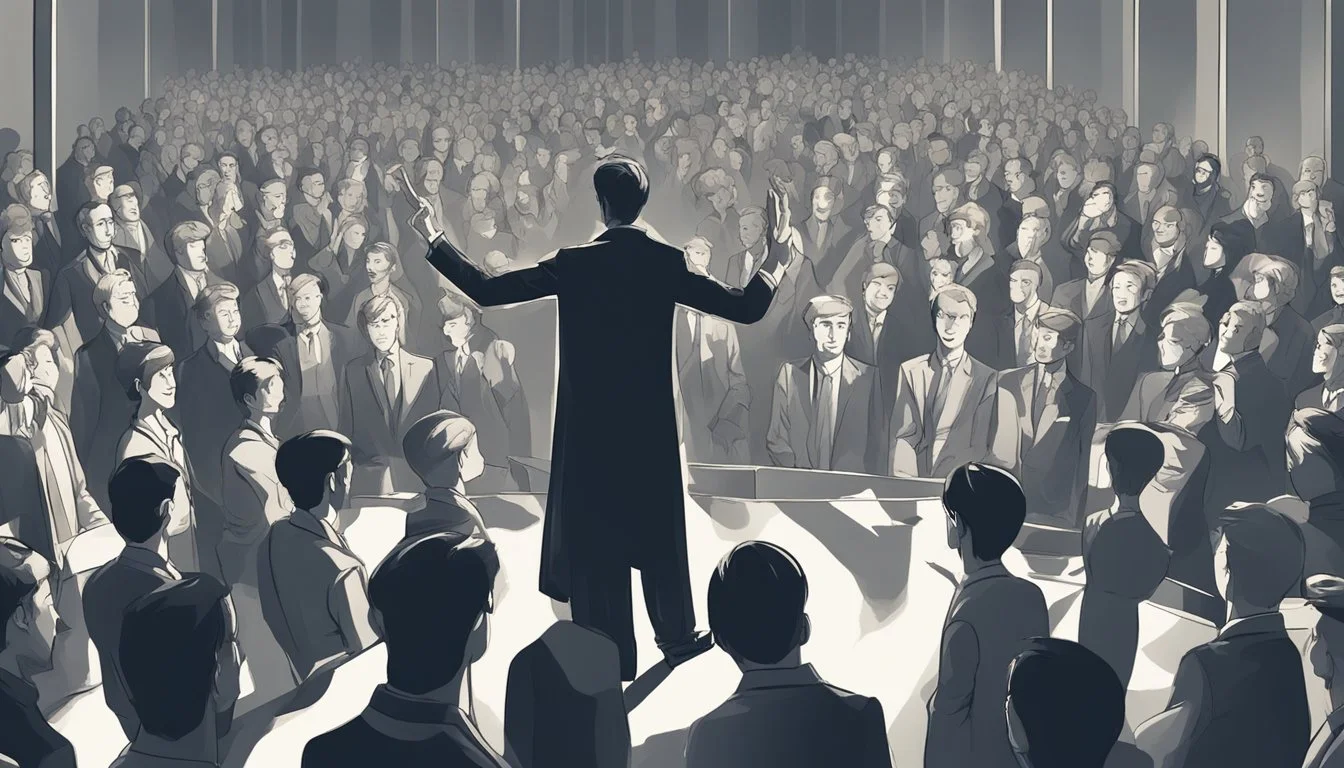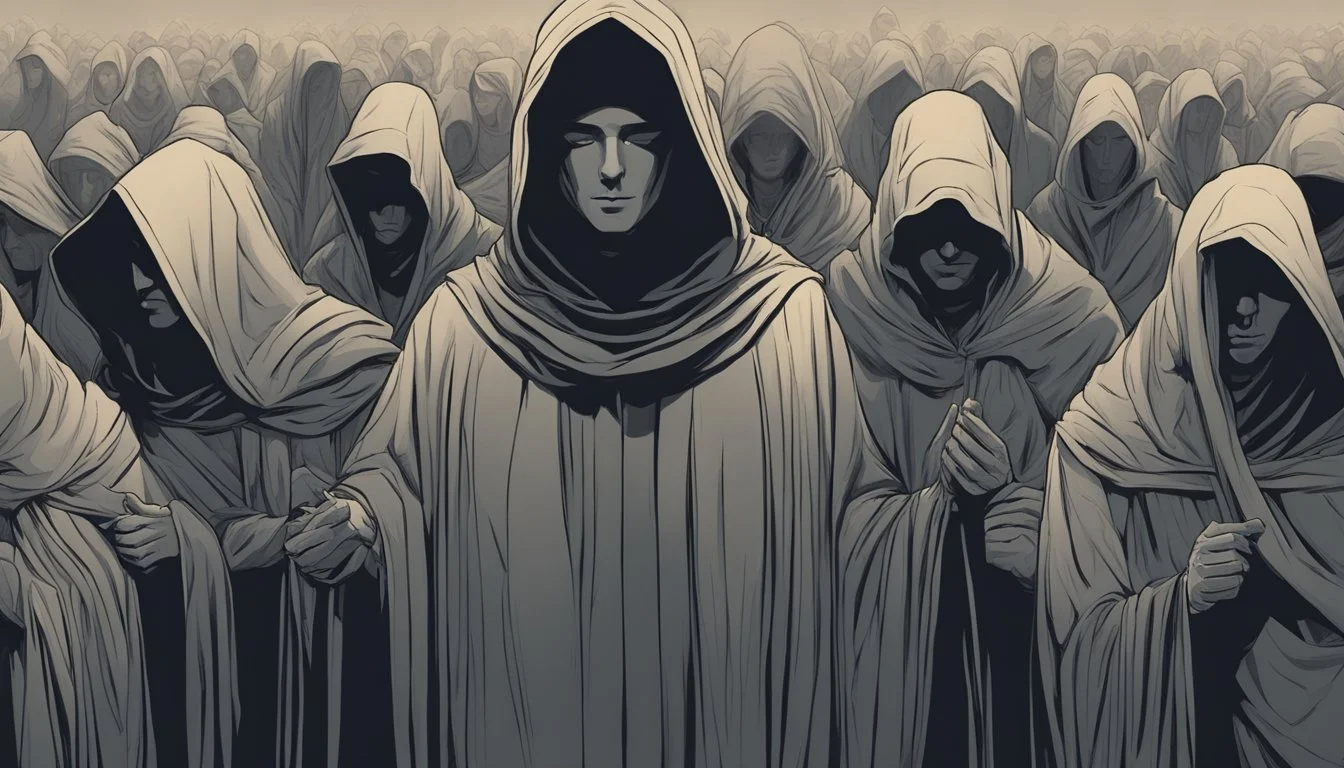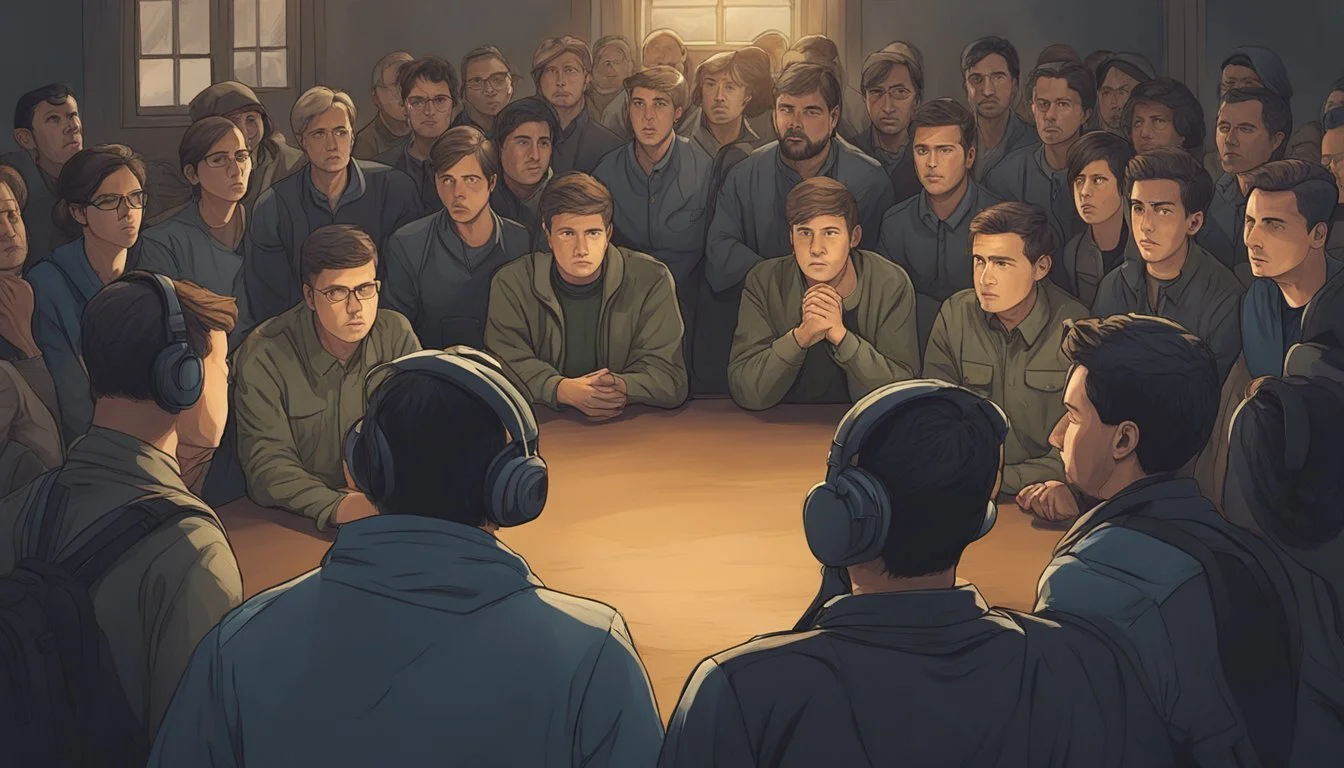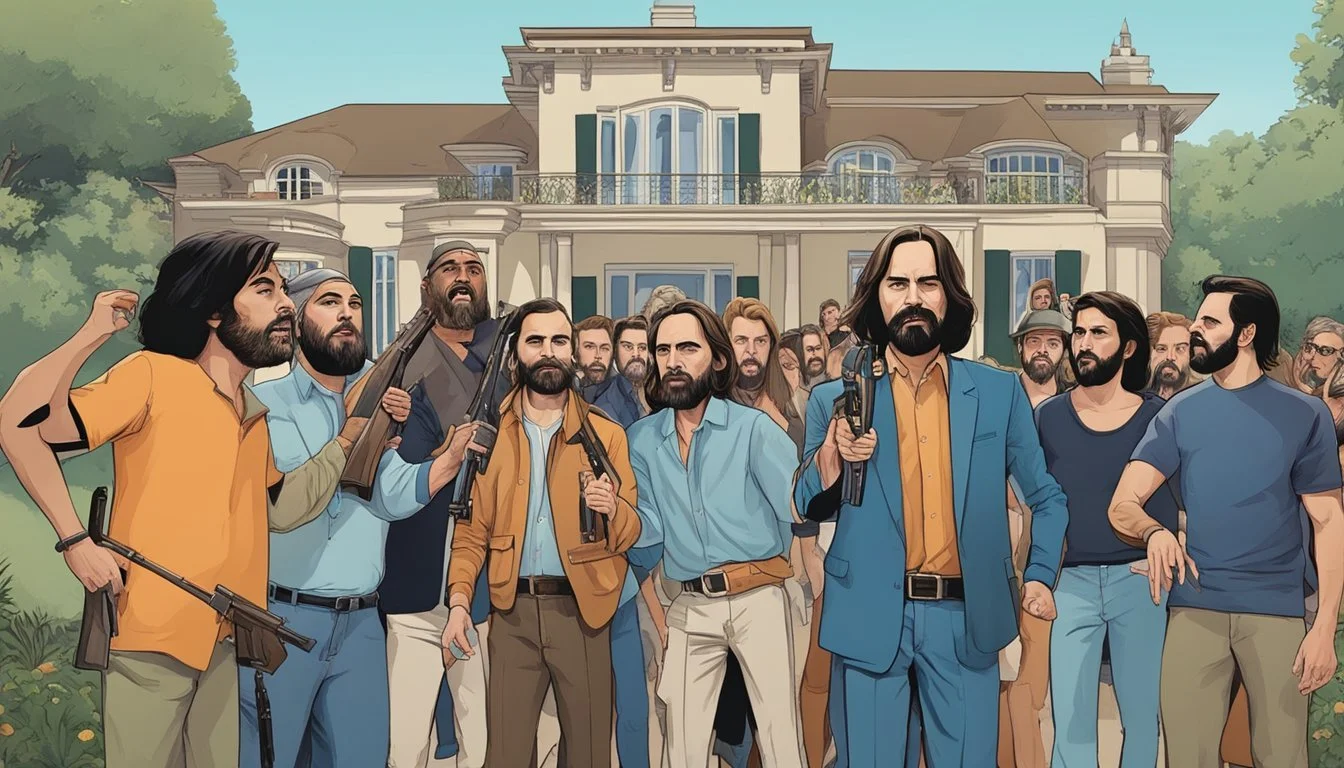Charles Manson: 12 Bizarre Commands Given by the Infamous Cult Leader
Unveiling the Twisted Mind of a Criminal Mastermind
Charles Manson, one of the most infamous cult leaders in American history, exerted an extraordinary level of control over his followers. His charismatic personality and manipulative tactics allowed him to command a group known as the Manson Family, who carried out heinous crimes under his direction.
Manson's ability to influence his followers led to a series of shocking and brutal murders that shocked the nation in 1969. His bizarre commands and twisted ideology captivated his cult members, inspiring them to commit acts of violence in pursuit of his apocalyptic vision. This article explores twelve of the most unusual and disturbing directives given by Manson during his reign as a cult leader.
1) "Helter Skelter"
Charles Manson's obsession with the Beatles song "Helter Skelter" became a central part of his twisted ideology. He interpreted the lyrics as a prophecy of an impending race war between whites and blacks.
Manson commanded his followers to prepare for this apocalyptic conflict, which he believed would result in the black population overthrowing the white establishment. He expected his "Family" to emerge from hiding and take control in the aftermath.
To precipitate this imagined war, Manson ordered his followers to commit a series of brutal murders. He instructed them to leave clues implicating black perpetrators, hoping to incite racial tensions.
The phrase "Helter Skelter" was even written in blood at one of the crime scenes. This macabre detail directly linked the murders to Manson's warped interpretation of the Beatles song.
Manson's "Helter Skelter" philosophy demonstrates how he manipulated popular culture and music to indoctrinate his followers. It became a powerful tool for controlling the Family and justifying horrific acts of violence.
2) "People need to stop being real"
Charles Manson often made bizarre statements to his followers. One of his strangest commands was telling people to "stop being real." This cryptic instruction reflected Manson's desire to break down his followers' sense of self and reality.
Manson believed that by shedding their "real" identities, his followers could become blank slates. He wanted them to be more susceptible to his influence and manipulation. The cult leader saw individual personalities as obstacles to his control.
By instructing people to stop being real, Manson aimed to erode their connections to society and morality. He encouraged his followers to reject conventional norms and embrace his twisted worldview instead.
This command aligned with Manson's broader goal of creating a malleable group that would carry out his orders without question. He sought to reshape his followers' perceptions of themselves and the world around them.
Manson's directive to "stop being real" exemplifies the psychological tactics he employed to maintain control over his cult. It demonstrates how he worked to break down individual identity and replace it with unquestioning loyalty to himself and his ideologies.
3) "Death is the greatest form of love"
Charles Manson's statement "Death is the greatest form of love" exemplifies his twisted worldview and manipulative tactics. This paradoxical phrase likely served to confuse and control his followers.
Manson often used contradictory statements to break down rational thinking among his cult members. By equating death with love, he blurred the lines between positive and negative concepts.
This command may have been used to justify violent acts or desensitize followers to the idea of murder. It could also have been a way to romanticize death and make it seem less frightening or more meaningful.
Manson's philosophy often centered on death and destruction. He believed in an apocalyptic race war he called "Helter Skelter," which may have influenced this particular statement.
The quote demonstrates Manson's ability to craft memorable, shock-inducing phrases that captured attention and sparked curiosity. Such statements contributed to his notoriety and ability to attract followers.
4) Sabotaging Hollywood parties
Charles Manson instructed his followers to disrupt Hollywood gatherings in subtle yet unsettling ways. He believed these actions would sow chaos and fear among the entertainment elite.
One tactic involved sending cult members to infiltrate parties uninvited. They would blend in initially, then gradually introduce bizarre behavior to unnerve other guests.
Manson also directed followers to sabotage food and drinks at events when possible. This ranged from tampering with hors d'oeuvres to spiking punch bowls with mild hallucinogens.
Another command was to spread unsettling rumors and gossip at these gatherings. Cult members would whisper about impending doom or share fabricated stories of violence and conspiracy.
Manson instructed his followers to leave cryptic messages or symbols around party venues. These were meant to be discovered later and create a sense of unease.
The goal was to chip away at the sense of security and glamour surrounding Hollywood's social scene. Manson saw these actions as a way to undermine the established order he despised.
5) Paranoia about Armageddon
Charles Manson instilled a deep-seated fear of an impending apocalypse in his followers. He dubbed this coming doomsday event "Helter Skelter," borrowing the term from a Beatles song.
Manson preached that a race war would erupt, plunging society into chaos. He claimed his Family would emerge as leaders in the post-apocalyptic world.
This paranoid belief drove Manson to command his followers to prepare for the end times. He ordered them to stockpile supplies and weapons in remote desert locations.
Manson's apocalyptic visions became increasingly violent. He believed the Family needed to spark the race war themselves through shocking acts of violence.
This warped ideology ultimately led to the infamous Tate-LaBianca murders in August 1969. Manson hoped these killings would ignite the racial tensions he believed would bring about Armageddon.
The Family's actions were deeply rooted in Manson's paranoid fantasies about the end of the world. His ability to convince others of this impending doom showcased his power as a manipulative cult leader.
6) "I've sold my soul to the devil"
Charles Manson often made bizarre statements to his followers, and one of the most unsettling was his claim of selling his soul to the devil. This declaration served multiple purposes within the cult's dynamics.
Manson used this statement to reinforce his perceived power and mystique among his followers. By asserting a connection with dark forces, he aimed to instill fear and awe in his devotees.
The claim also aligned with Manson's efforts to portray himself as an otherworldly figure. He frequently wove supernatural elements into his teachings, blending them with apocalyptic prophecies and twisted interpretations of popular culture.
For some followers, this statement justified Manson's destructive actions and commands. It provided a supernatural explanation for his behavior and decisions, further cementing their loyalty to him.
Manson's assertion of selling his soul played into the counterculture's fascination with the occult during the late 1960s. This helped attract individuals already drawn to esoteric and fringe beliefs.
7) Taking celebrity homes hostage
Charles Manson instructed his followers to target homes of Hollywood celebrities. This bizarre command was part of his plan to incite fear and chaos in society.
Manson believed that by invading high-profile residences, his "family" could gain attention and spread their message. He specifically chose homes of the rich and famous to maximize impact.
The most infamous instance was the attack on Sharon Tate's residence. Manson directed his followers to enter the home and carry out violent acts against its occupants.
This strategy aimed to create widespread panic among celebrities and the general public. Manson thought it would accelerate his vision of an impending race war he called "Helter Skelter."
The cult leader's commands resulted in several horrific crimes, including the murders at the Tate-Polanski house. These actions shocked the nation and brought intense scrutiny to Manson and his followers.
Manson's directive to target celebrity homes demonstrated his manipulative tactics and desire for notoriety. It remains one of the most disturbing aspects of his cult leadership.
8) Drug-induced visions of racial war
Charles Manson's apocalyptic beliefs centered around a concept he called "Helter Skelter." This vision of an impending racial war was heavily influenced by his drug use, particularly LSD.
Manson interpreted Beatles lyrics as prophetic messages, believing they foretold a violent conflict between black and white Americans. He claimed this war would result in the decimation of the white population, leaving his "Family" to emerge as leaders.
The cult leader's drug-fueled delusions led him to command his followers to commit murders. He believed these acts would trigger the racial apocalypse he envisioned.
Manson's manipulation of his followers was amplified by group LSD use. This shared drug experience reinforced his teachings and strengthened the cult's bonds.
The combination of hallucinogenic drugs and Manson's charismatic leadership created a dangerous environment. It allowed him to convince his followers that his twisted worldview was reality.
9) Directing followers to murder
Charles Manson's most infamous command to his followers was to commit murder. In August 1969, he instructed members of his "Family" to carry out a series of killings in Los Angeles.
Manson sent a group of his followers, including Charles "Tex" Watson, Susan Atkins, Patricia Krenwinkel, and Linda Kasabian, to a house on Cielo Drive. He ordered them to kill everyone present at the residence.
This resulted in the brutal murders of pregnant actress Sharon Tate and four others. The following night, Manson directed his followers to kill Leno and Rosemary LaBianca in their home.
Manson's commands were specific and calculated. He instructed his followers to make the crimes appear random and to leave behind bizarre clues to confuse investigators.
Though Manson did not personally commit the murders, his role in directing the killings led to his conviction for first-degree murder and conspiracy to commit murder.
10) Compelling followers to steal
Charles Manson frequently instructed his followers to engage in theft as a means of supporting the Family's lifestyle. He termed these acts of stealing "creepy crawling," which involved breaking into homes while the occupants slept.
Manson encouraged his disciples to pilfer food, clothing, and money from various sources. This included shoplifting from stores and raiding dumpsters behind supermarkets for discarded produce.
The cult leader also directed his followers to steal credit cards and checkbooks during their home invasions. These items were then used to fund the Family's activities and purchase necessary supplies.
Manson's commands to steal extended to vehicles as well. He instructed his followers to hotwire cars for transportation or to sell for quick cash. This practice allowed the group to remain mobile and evade law enforcement.
The cult's theft operations were not limited to material goods. Manson also ordered his followers to steal personal information and documents from their victims, which could be used for identity fraud or blackmail purposes.
11) "They're not really dead"
Charles Manson's disturbing beliefs extended to his views on death. He claimed that those who had died were not truly gone. This bizarre command instilled a sense of confusion and denial among his followers.
Manson taught his cult members that death was merely a transition to another state of being. He asserted that the deceased could still communicate with the living through various means.
This belief allowed Manson to maintain control over his followers, even after tragic events occurred. By denying the finality of death, he created a false sense of continuity and connection within the group.
Manson's followers were encouraged to speak to the dead and anticipate their return. This practice further blurred the lines between reality and fantasy within the cult.
The notion that "they're not really dead" served to desensitize cult members to violence and loss. It also reinforced Manson's perceived power, as he claimed to have insight into the afterlife.
12) Convincing followers to change identities
Charles Manson employed various tactics to control his followers, including persuading them to adopt new identities. This practice helped sever ties with their past lives and increased their dependence on the cult.
Manson often assigned new names to his followers, replacing their birth names with monikers that reflected their new roles within the "Family." This renaming ritual symbolized a rebirth into the cult and reinforced Manson's authority.
Some followers were encouraged to create entirely new personas, complete with fabricated backgrounds and altered appearances. This tactic made it harder for family members to locate them and complicated law enforcement efforts to track the group.
Manson also promoted the idea of fluid identities, telling his followers they could become anyone or anything. This concept appealed to young people searching for purpose and identity in the turbulent 1960s.
By convincing his followers to shed their former identities, Manson created a blank slate on which he could imprint his own twisted ideology. This manipulation tactic strengthened his control over the group and facilitated their participation in criminal activities.
Early Life and Background
Charles Manson's tumultuous upbringing and early criminal activities shaped his path to becoming a notorious cult leader. His unstable family life and troubled childhood laid the foundation for his later manipulative and violent tendencies.
Family and Childhood
Charles Milles Manson was born on November 12, 1934, in Cincinnati, Ohio. His mother, Kathleen Maddox, was only 16 years old at the time of his birth. Manson never knew his biological father, Colonel Walker Henderson Scott Sr.
Kathleen initially left the name field blank on Manson's birth certificate, later filling it in as "No Name Maddox." This early rejection set the tone for Manson's chaotic childhood.
Raised primarily by his grandmother and aunt, Manson experienced frequent abandonment and instability. His mother's criminal activities and alcoholism further contributed to his turbulent upbringing.
Criminal Activities
Manson's criminal behavior began at an early age. By the time he was 13, he had already committed numerous petty crimes and spent time in juvenile detention centers.
His offenses escalated as he grew older, including:
Auto theft
Burglary
Armed robbery
Pimping
Manson spent much of his youth and early adulthood in and out of correctional facilities. These experiences exposed him to various criminal influences and honed his manipulative skills.
By 1967, Manson had spent more than half of his life in institutions. This background set the stage for his later role as the leader of the infamous Manson Family cult.
The Manson Family
The Manson Family was a cult led by Charles Manson in California during the late 1960s. The group attracted mostly young, disaffected individuals seeking an alternative lifestyle.
Formation and Recruitment
Charles Manson began gathering followers in 1967 after his release from prison. He targeted vulnerable young people, often runaways and drug users, with promises of belonging and spiritual enlightenment.
Manson used a combination of charisma, manipulation, and drug-fueled indoctrination to build loyalty. He portrayed himself as a messianic figure and exploited the countercultural atmosphere of the time.
The Family grew to include around 100 members at its peak. Most were in their late teens and early 20s, drawn from middle-class backgrounds.
Life at the Spahn Ranch
In 1968, the Manson Family settled at Spahn Ranch, an abandoned movie set near Los Angeles. The ranch became their primary commune and base of operations.
Daily life revolved around Manson's teachings and preparing for an apocalyptic race war he called "Helter Skelter." Members engaged in frequent drug use, group sex, and petty crime to support the commune.
Manson exerted strict control over Family members. He assigned new names, dictated romantic pairings, and used isolation and psychological manipulation to maintain power.
The ranch's remote location allowed the group to operate with little outside interference until their involvement in the notorious Tate-LaBianca murders in 1969.













